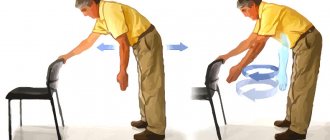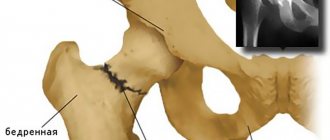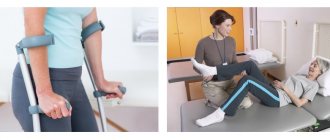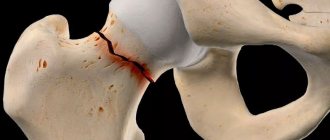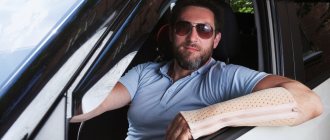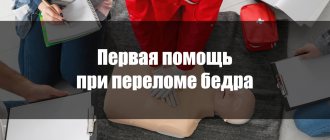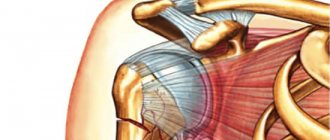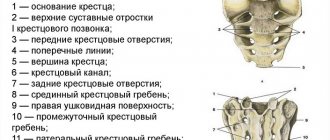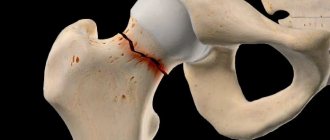A femur fracture is most common in older people. As a result of the fall, the thinnest part, the neck, is damaged. Treatment of a fracture takes a lot of time, and it is not always possible to fully restore the ability to work. In most cases, surgery is necessary to compare the fragments. If surgery is contraindicated, conservative treatment methods are used. A boot for a hip fracture is the best way to immobilize the injured limb. A specially designed device limits mobility in the joint and promotes rapid bone healing.
Choice of treatment method
It would seem that surgery is a health risk; you can agree to surgical intervention only in a hopeless situation when conservative treatment is ineffective. With a fracture of the femoral neck, the situation is the opposite. According to medical recommendations, the patient should be operated on on the first day after the injury, which significantly increases the chances of recovery.
There is a sad statistic: approximately half of older people with a hip fracture who were treated conservatively die from complications within a year after the injury.
Staying in the same position for a long time leads to the following consequences:
- In order for the fracture to heal, the person is given strict bed rest for several months. Blood flow slows down in the lower limb, blood clots can form, which increases the risk of strokes and heart attacks;
- under the influence of its own weight, bedsores occur in the area of the tailbone, buttocks, and shoulder blades;
- prolonged bed rest leads to limited mobility of the chest, the lungs do not work fully. As a result, congestive pneumonia develops;
- general weakness, muscle atrophy are the consequences of conservative treatment of fractures.
Contraindications for surgery
Doctors refuse surgery in several cases:
- serious condition of the patient: acute cardiac, renal failure, stroke, heart attack;
- mental disorders;
- bleeding disorders;
- if the patient was unable to walk before the injury.
If the above-mentioned contraindications are absent, osteosynthesis is performed - comparison of bone fragments using feints, plates, and knitting needles. In case of a comminuted fracture, endoprosthetics is performed - replacing the joint with an artificial analogue.
In the postoperative period, it is necessary to ensure limb rest. For this purpose, an orthopedic boot is used for a femoral neck fracture.
Causes of hip fracture
Before examining the causes, it is important to identify the factors that contribute to this type of injury:
- hormonal disbalance;
- deposition of cholesterol plaques on the walls of blood vessels;
- the presence of excess weight, which provokes an increase in the load on the musculoskeletal system;
- insufficiency/excess of physical activity;
- lack of coordination;
- inadequate daily diet.
The probable causes of this type of damage are:
- road accident;
- production situations;
- various types of falls.
What is a derotation boot?
Despite the complex name, the boot is easy to use, but no less effective. In order for a callus to form faster and the fragments to grow together, it is necessary to fix the lower limb. The word derotational means restricting movement. The headband is shaped like a boot, hence the name.
An orthopedic boot is used to fix the leg in a physiological position, starting from the middle of the shin and ending near the phalanges of the fingers. In the heel area, a transverse stick is attached to the bandage, which limits movement in the joint.
Characteristics of the device
The material for the boot is lightweight plastic or polymer gypsum with a porous structure. When in contact with them, the skin continues to “breathe”. This is the main condition for the prevention of irritation and diaper rash.
The boot has fasteners - wide straps, with the help of which the structure is attached to the sore leg. Terry cloth is used as a soft inner layer. There is also a sponge-like layer that quickly absorbs excess accumulated moisture.
The set includes several belts so that the patient can choose the most convenient fixation option.
Indications for use
An orthopedic boot has many advantages and is used both for the treatment of fractures and during rehabilitation.
There are the following indications for the use of an orthosis (boot):
- Conservative treatment of a femoral neck fracture. If surgery is contraindicated, it is necessary to fix the lower limb as securely as possible and limit movements until a callus forms;
- rehabilitation period after hip replacement;
- ankle injuries;
- a derotational boot for a femoral neck fracture is used in the postoperative period to reduce the load on the leg;
- paralysis of the legs, other innervation disorders.
Symptoms
In older people, fractures are not always accompanied by acute pain and swelling. And even such a severe injury as damage to the femoral neck, in certain cases can occur as an exacerbation of arthrosis or other pathology of the hip joint, which is aggravated by the absence of visible reasons to suspect an injury. However, this delays the diagnosis and worsens the prognosis. Therefore, you should contact an orthopedist-traumatologist if the following symptoms appear:
- Pain in the hip or groin area, which may occur at rest and intensify during physical activity, especially when resting on the heel. In some situations, when, as a result of a fracture, the nerve passing through the hip joint suffers due to irritation by bone fragments or compression by swollen soft tissues, the pain may radiate to the heel.
- Impairment of the supporting function of the affected leg, up to the loss of the ability to move independently without support or support.
- Turning the injured leg outward while calmly remaining in a horizontal position. In this case, the patient cannot turn it to its normal position.
- Shortening of the leg is typical for displaced or impacted fractures. But this is usually accompanied by acute pain, which can only be reduced with strong painkillers.
- Formation of a hematoma in the thigh or groin area, which results from damage to blood vessels and muscles during a fall or as a result of injury from displaced bone fragments. But in obese elderly people, the hematoma may not appear externally due to the large volume of subcutaneous fat.
In the absence of timely, adequate treatment, the likelihood of developing aseptic necrosis of the femoral head, i.e., its death and gradual resorption, increases sharply.
special instructions
The fixation device has almost no contraindications. The boot should not be used if there are purulent skin lesions, trophic ulcers or gangrene. Also contraindicated are tumor lesions of the bones of the ankle joint, which significantly deform the limb. In this case, it will simply not be possible to fix the orthosis.
Note! Orthopedic boots are made from low-allergenic materials, but each organism is individual, and it is impossible to completely eliminate allergies.
If rashes or itching appear on the skin while using the fixative, you should inform your doctor. The doctor will determine the cause of this reaction and give recommendations on replacing the boot with an analogue one.
By correctly fixing the leg in the orthosis, you can avoid chafing and irritation. Doctors recommend wearing socks or knee socks under your boots to avoid excessive friction and damage to the skin.
Advantages and disadvantages
A derotational device is an excellent alternative to a plaster cast:
- made of breathable material that allows air to pass through;
- facilitates vertical positioning of the patient;
- does not create discomfort or burden when worn;
- easy to put on and take off;
- prevents the occurrence of bedsores;
- does not get wet, even if you accidentally spill liquid;
- will not leak to the skin;
- has a soft lining material that is replaceable and washable.
Minus - inflated price from 3800 to 9000 rubles. Although in some cases the device pays for itself and is extremely useful.
Attention! There are contraindications. The boot is not worn if there is a tumor in the bone of the ankle, an ulcer, or gangrene. It will not even be possible to fix the product in damaged areas.
Main advantages
Modern orthopedic fixators can be purchased in special medical equipment stores. There is also a huge selection available on the Internet. But keep in mind that before purchasing, you need to try on the orthosis to choose the appropriate size. Therefore, it is better to go to a store or warehouse and choose the model you like.
The main advantages of a derotational boot:
- the device is light, almost not felt on the leg, but at the same time securely fixes it;
- made of durable, reliable material;
- There are special soft pads inside that prevent the formation of bedsores;
- low-allergenic orthosis. Natural fabrics are used for lining;
- it can be removed at any time, allowing the limb to rest;
- the boot follows the anatomical shape of the ankle, does not put pressure, does not bend the leg;
- it is easy to use. Even a child can open special fasteners or Velcro;
- air enters through the holes;
- The retainer transmits x-ray radiation, so it can not be removed during the examination.
Types of orthopedic structures
A derotational boot, depending on the degree of rigidity, can be:
- light;
- semi-rigid;
- tough.
Light fixation is needed for mild to moderate injuries, dislocations, and small cracks. Semi-rigid fixation is necessary to strengthen joints, reduce pain and accelerate the healing of wounds and cracks. Models with rigid fixation completely immobilize the limb, block movement and prevent bone fragments from moving.
Only the attending physician can select the appropriate boot option based on examination and diagnostic measures.
Plaster boot
Orthoses made from modern materials are quite expensive. Not every person, especially a pensioner, will be able to afford it. In such cases, a plaster cast is applied for a fracture of the femoral neck, shaped like a boot.
A plaster cast is much heavier and cannot be removed without assistance. Only a doctor should apply a fixative, taking into account the following recommendations:
- before starting the procedure, it is necessary to compare the bone fragments and fix the leg in the correct position;
- Cotton balls should be placed in places where the bones are close to the skin to prevent chafing;
- a plaster rotational boot for a fracture of the femoral neck is applied from the middle of the tibia to the phalanges of the fingers, the back side remains open;
- after the procedure, the lower limb should be kept in an elevated position to reduce swelling;
- The bandage should not squeeze the leg or cause discomfort. If the skin turns blue, swelling increases or pain occurs, this indicates an incorrect technique for applying the boot. It is necessary to remove the plaster and repeat the procedure, adhering to all the rules.
Rehabilitation
To restore the functions of a damaged limb, a lot of effort must be made. You must follow all doctor's recommendations. It is prohibited to start doing gymnastics or attend a massage on your own. The callus may not yet have formed; any procedures in this case will lead to repeated displacement.
During rehabilitation, you must adhere to several rules:
- In the first stages, the patient is shown strict bed rest. To prevent the development of complications, the patient should regularly change position in bed. You need to sleep on a special orthopedic mattress;
- breathing exercises help prevent congestive pneumonia;
- complete nutrition. The diet should include vegetables and fruits, as well as calcium-containing foods. Since a person spends a long time without moving, intestinal function also slows down. Food should be gentle. It is necessary to exclude fatty, fried, rough foods. Preference is given to soups, cereals, boiled meat or fish, cottage cheese;
- in old age, calcium is poorly absorbed, therefore it is recommended to additionally take it in tablets;
- chondroprotectors help restore bone tissue and protect it from further destruction;
- during the first month, therapeutic exercises are limited to breathing exercises and toe movements;
- after the formation of a callus, you can bend and straighten your leg at the knee and ankle joint without getting out of bed;
- Next, the patient needs to learn to walk on crutches. At first, the patient needs help, he learns to maintain balance and move on a flat surface;
- an orthopedic boot after a fracture allows you to immobilize the hip joint. Functions can be restored much faster if you combine bone fixation with physiotherapy, massage, and physical therapy.
